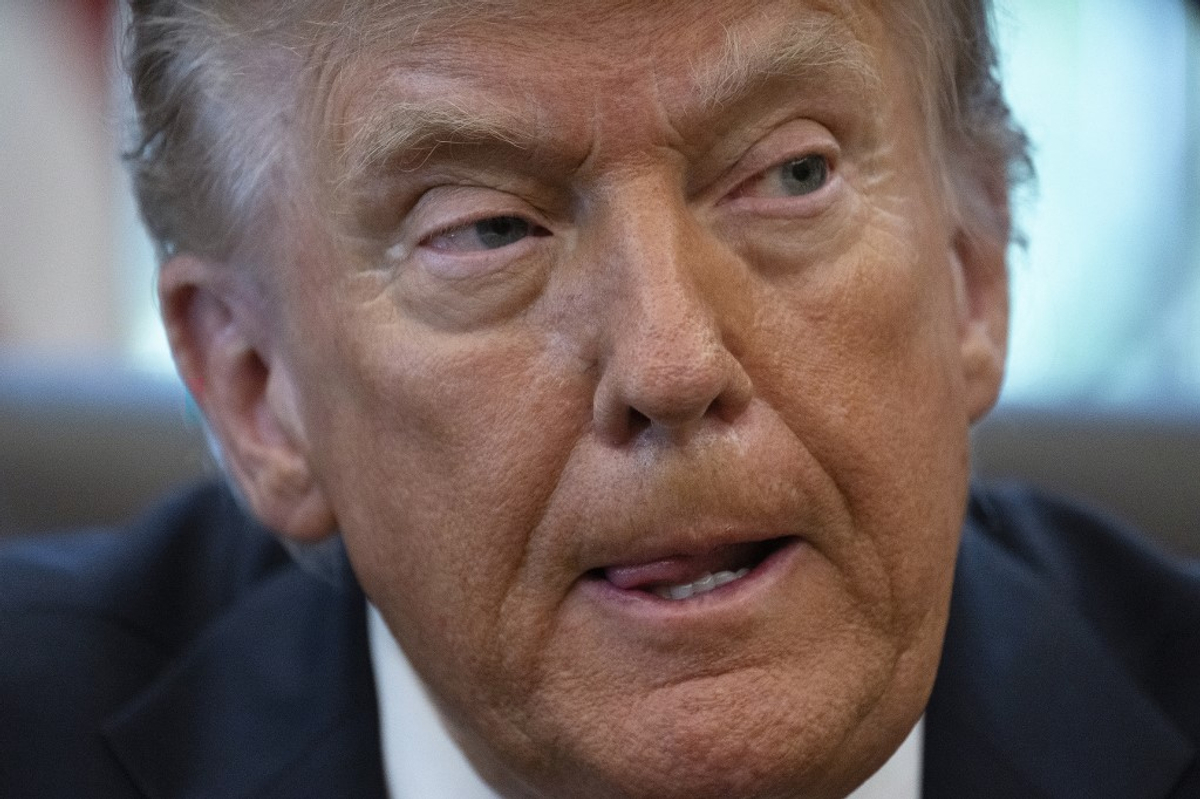Copyright kyivpost

US President Donald Trump balked yet again on Sunday onboard Air Force One, telling reporters that, for now, he is not considering a deal that would greenlight the sale of deep-strike Tomahawk missiles to Ukraine. These loitering enabled missiles are capable of reaching the Kremlin, delivering a 1,000-pound class blast/fragmentary unitary warhead for pinpoint targets or a 166 combined-effects bomblets warhead for area targets. While not a complete gamechanger, they increase Ukraine’s ability to inflict serious damage on Russia’s military, economic, and military infrastructure. Notably, on Halloween, CNN reported that the Pentagon had notified the White House that providing Ukraine with Tomahawks would not negatively impact current US military operations or stockpiles. Yet, seemingly, this reporting directly contradicted Trump’s earlier admonishment of Ukrainian President Volodymyr Zelensky during a mid-October meeting in the Oval Office the day after his telephone call with Vladimir Putin. Trump told Zelensky that he would rather not provide the missiles to Ukraine because “we don’t want to be giving away things that we need to protect our country.” If missile inventories were not the issue, then what is? Initially questions arose as to whether or not the sea-based weapon system could be fired from land. It can. While the Tomahawk missile is predominantly launched from US Navy ships and submarines, it can also be launched from land via the US Army’s Typhon missile system. The Army successfully tested Typhon at the White Sands Missile Range in New Mexico in November 2024, and has since deployed the system to Australia and the Philippines to support Exercises Talisman Sabre and Salaknib. In September 2025, the Army deployed the system to Japan to participate in Exercise Resolute Dragon. Russia and China are very much aware of this capability. In early October, Putin warned Trump that providing Tomahawk missiles to Ukraine for long-range strikes deep into Russia would lead to the destruction of Moscow’s relationship with Washington. The personal relationship with Putin was again at risk, even though Trump acknowledged in September that his relationship with Putin “unfortunately… didn’t mean anything.” Then in mid-October, the complexity of the weapon system presented the last obstacle providing Ukraine the greenlight. Trump said the missiles were “too complex for Kyiv to deploy [sic] without substantial US training.” But Ukraine has rapidly fielded other “complex” weapon systems provided by the US – namely the Patriot Missile System, HIMARS, M1A1 and the F-16 fighter jet. More than likely though, it was a phone call from Putin on Oct. 16, the day prior to Trump’s meeting with Zelensky in the Oval Office that tomahawked the Tomahawks. Days prior, frustrated by Putin’s intensifying aerial bombardment of Ukraine following their Alaska Summit in August, the Trump suggested he would provide Ukraine the weapon system, telling reporters, “Do they [Russia] want Tomahawks going in their direction? I don’t think so.” Zelensky boarded a plane to Washington, DC believing he would receive the weapon system. But Putin got in front of him and provided his own dangle to the Trump – economic opportunities with Russia. During his interview Sunday evening with Norah O’Donnell on CBS’s 60 Minutes, Trump said, “I think he [Putin] really wants to do business with the US… I think he wants to come in and he wants to trade with us, and he wants to make a lotta money for Russia, and I think that’s great. That’s what I like.” Business deals are Trump’s kryptonite – and he took the bait, only to be “disappointed” again in just a matter of weeks. So, it begs the question: was Trump’s Tomahawk dangle simply leverage to get Putin to the negotiation table? He got the phone call he wanted, and he got a verbal “go” for another summit with Putin in Budapest, Hungary. It was short-lived though. Soon after, the White House received a memo from Russia’s foreign ministry reiterating Putin’s maximalist demands upon Ukraine – namely, the “root causes” of his special military operations: “territorial concessions, a steep reduction of Ukraine’s armed forces and guarantees it will never join NATO.” The US cancelled the summit following a phone call between Russian foreign minister Sergey Lavrov and Secretary of State Marco Rubio. Moscow was showing no willingness to negotiate. With the threat of the Tomahawk missile deployment to Ukraine off the table, Trump lost his leverage. Advantage Putin, again. Trump was back where he started. In May 2023, then-presidential candidate Trump confidently proclaimed during a CNN town hall: “They’re dying, Russians and Ukrainians. I want them to stop dying. And I’ll have that done – I’ll have that done in 24 hours.” Nine months later, a frustrated President reflected: “It’s been a tough war for Putin... and it’s been a tough war for Ukraine… Sometimes you have to let it just get fought out.” During the 60 Minutes interview Trump descended back down a familiar path concerning the war in Ukraine, repeating that “[Ukraine] was Joe Biden’s war, not my war. I inherited that stupid war. That should not have been a war. That would’ve never happened if I were president.” He cannot persuade Putin to stop attacking, nor can he get Zelensky to stop defending his country. Ending his ninth war and realizing his aspirations to secure economic deals with Russia are beyond his reach, Trump appears to have given up – taking his ball and going home. Or maybe not. The White House strategy of de-escalation may have shifted back to more of an offensive approach. Friday’s announcement from the Pentagon seemingly keeps the option open. The message to Russia – and China – is that the US stockpiles of Tomahawk missiles are sufficient. Furthermore, after the announcement of the Budapest summit cancellation, Trump imposed sanctions on Russia’s top two oil producers – Rosneft Oil Company and Lukoil. He also criticized Putin for testing nuclear weapons, then announced the US would resume testing nuclear weapons. The impact of the sanctions – somewhat surprisingly – was immediate, as both China and India, cognizant of the potential for secondary sanctions, suspended purchases of Russian oil. Those purchases are Putin’s lifeline for funding his war against Ukraine. Despite it all, Putin continues to dig in deeper with each setback. The threat of Tomahawk missiles does not deter his end state. Now donning a military uniform, he believes he can win the ground war before Ukraine can destroy his economy. Yet the would-be Russian emperor has no clothes on – and the fear of open windows, heart attacks, or assignment to the front has silenced his general officers. On Tuesday, Putin signed into law a bill mandating year-round military conscription to ensure unencumbered manpower to fill the ranks for continued “cannon fodder” assaults in Ukraine. His cost calculus is not measured in human life. The killing will continue until Russia is forced to stop attacking. President Trump needs to put the Tomahawk missile back on the table so that Putin will begin understanding the cost of continuing the war in Ukraine. The views expressed in this opinion article are the author’s and not necessarily those of Kyiv Post. Copyright 2025. Jonathan E. Sweet and Mark C. Toth. All rights reserved.



